Prevent your garden from being devoured by uninvited pests. By knowing how to protect your garden from a variety of insects, you can grow your plants and crops stress-free.
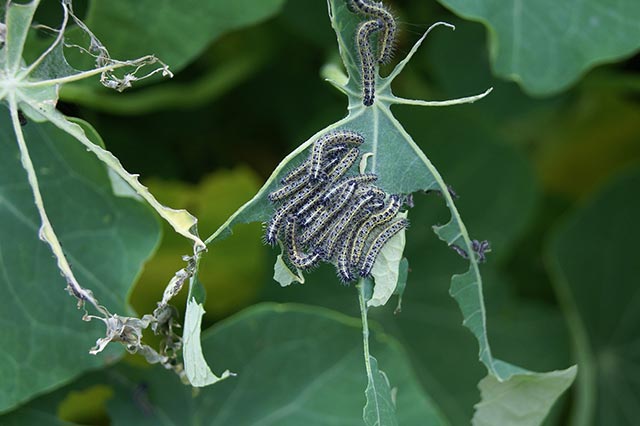
gardeninginfo-online.com gathered the following information and tips to help you eliminate garden pests naturally, without using harsh chemicals.
Garden Pests – Identify and Combat These Insects
The following common garden pests, if left unchecked, can consume enough of your garden to leave your plants in poor health and your crops partially destroyed.
Slugs and Snails
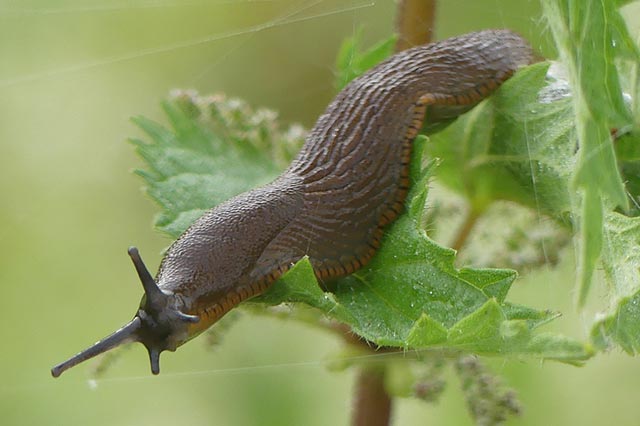
Basically, slugs are snails without the shell. These gastropods eat large, ragged holes in the foliage of plants and can entirely consume seedlings. Slugs and snails pose a particular threat to:
- Violets
- Lilies
- Cabbage
- Lettuce
- Strawberries
- Spider Flowers (Cleome)
- Floss Flower (Ageratum)
- Hostas
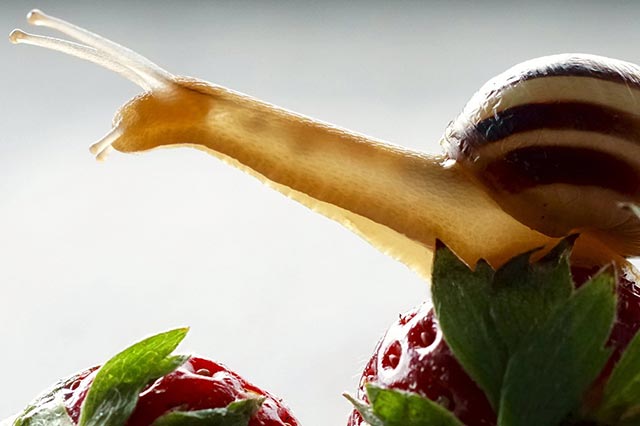
The more problematic species of slugs and snails include:
- Garden Snail (Helix aspersa)
- Grey Garden Slug (Deroceras reticulatum)
- Tawny Garden Slug/Cellar Slug (Limax flavus)
- Leopard Slug (Limax maximus)
Slugs and snails travel over a trail of mucus, seek protection from dehydration in cool, shaded, and damp locations. Unless disturbed or treated, they will return to their hiding and feeding places nightly.

You can confirm the presence of snails and slugs in your garden by the dried mucus/slime trails they leave behind.
Control measures include:
- Physical removal, when combined with other control measures, is an effective and long-lasting method of control.
- Diatomaceous earth or “DE” sticks to the snail or slug’s body, causing desiccation. DE dust should be applied in inch-wide bands near and around your plants and garden. Reapplication may be necessary after heavy rain.
- Copper strips fastened to flower bed containers or boxes are incredibly effective. Snails and slugs have a shock-like reaction when they are in contact with the metal.
- Commercial traps, boards, tiles, shingles, or anything that offers daytime protection are very effective in trapping this pest.
- Yeast trapping is another efficient method of control. Shallow containers filled with water and yeast or beer lure snails and slugs to the container only to fall into the liquid and drown.
While there are chemical control methods, it is highly recommended to seek natural, chemical-free solutions. If chemical control is used, pay particular attention to the label and its safety measures.
Caterpillars
Caterpillars are moths and butterflies in their larvae stage. These insects chew irregular holes in leaves or flowers and can entirely consume seedlings, young shoots, buds, leaves, or flowers.
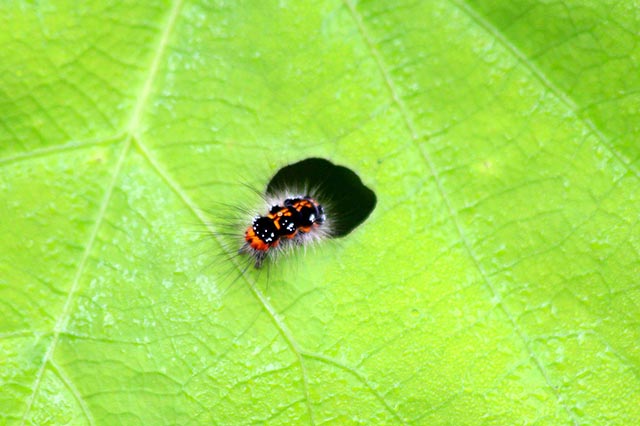
A caterpillar’s diet is comprised almost exclusively of plants. Most caterpillars can be found consuming plant foliage, but some may feed on seeds, roots, stems, fruit, or flower petals.
Tip: Caterpillars can be identified by the three pairs of (true) legs behind the head and five or fewer pairs of leg-like appendages on some but not all abdomen segments. These features distinguish them from beetle, fly, and sawfly larvae.
Some of the more common, problematic species include:
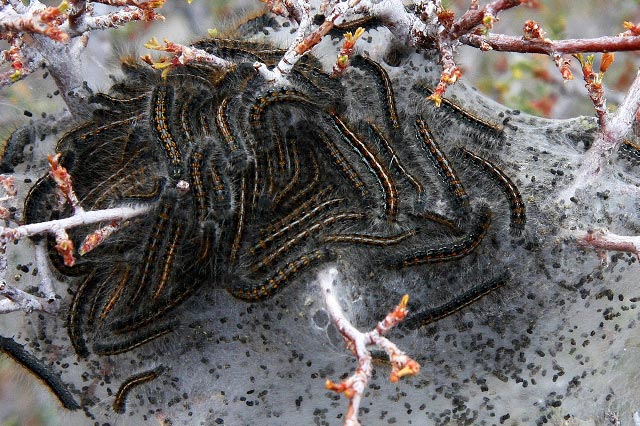
- Tent Caterpillar (Malacosoma americanum)
- Evergreen Bagworm Caterpillar (Thyridopteryx ephemeraeformis)
- Banded Woollybear Caterpillar (Pyrrharctia isabella)
- American Lady Butterfly (Vanessa virginiensis)
- Common Buckeye Butterfly (Junonia coenia)
- Giant Leopard Moth Caterpillar (Hypercompe scribonia)
- Bent-line Gray Caterpillar (Iridopsis larvaria)
- Fruit Tree Leafroller Caterpillar (Archips argyrospila)
- Cabbage Looper Caterpillar (Trichoplusia ni)
You can easily confirm the presence of caterpillars by examining the extensive damage to foliage, leading you to the insect’s presence. Caterpillars feed practically non-stop until they enter the pupa stage of their lifecycle.
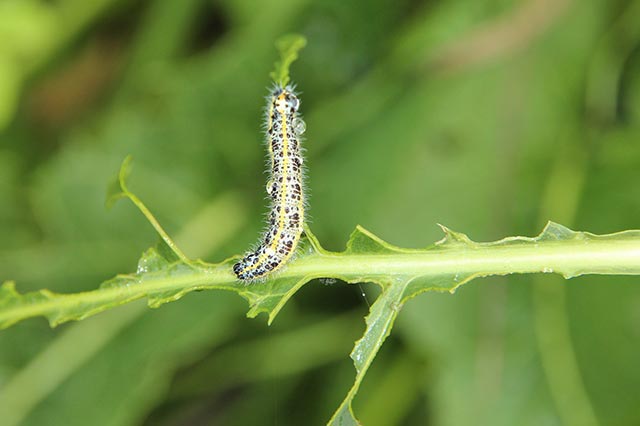
Control measures include:
- Pruning off rolled or webbed leaves and handpicking caterpillars from plants.
- Applying bacillus thuringiensis-kurstaki (Btk) an organic microbial insecticide that kills only caterpillars. This product is safe to use around bees, beneficial insects, and wildlife. Newly hatched caterpillars must feed on treated leaves to be eliminated. Treatment timing is critical in early to mid-spring.
- Covering your plants or crops with an insect barrier fabric (floating row cover). The covering forms a barrier, keeping moths and butterflies from laying eggs on the plants.
- Neem oil can be sprayed directly on plants and foliage throughout late winter and spring to prevent egg laying and deter caterpillars from consuming the plant.
- If commercial pesticides are used, pay close attention to the label and use only as directed. When treating edible plants, it is highly recommended to use organic alternatives.
Tip: When physically removing caterpillars from your garden, keep a container with a warm water and detergent solution handy. This solution kills caterpillars quickly.
Beetles
The beetle family (Coleoptera) consists of thousands of species, both destructive and beneficial, all necessary to maintain equilibrium in our environment. The following beetles are considered beneficial in a garden setting:
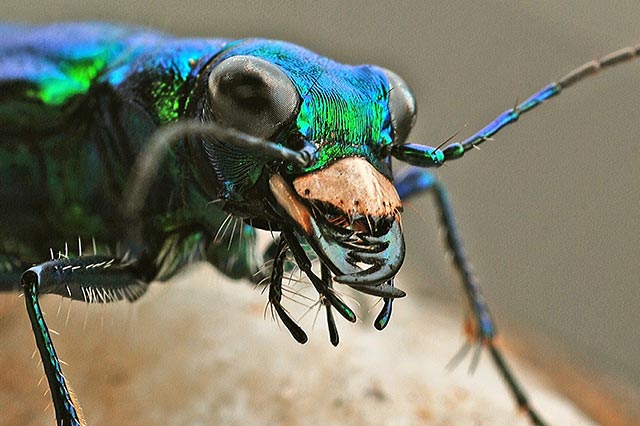
- Tiger Beetles (Cicindelinae)
- Soldier Beetles (Cantharidae)
- Lady Beetles (Coccinellidae) also called ladybirds and ladybugs
- Lady Beetle Larvae
These beetles spend their larval stage and adulthood consuming aphids, mealybugs, small invertebrates, and other insects. The following beetles devour plants, leaves, flowers, and can severely damage or kill trees:

- Japanese Beetles (Popillia japonica)
- Black Blister Beetles (Epicauta pensylvanica) Meloidae family
- Red Milkweed Beetles (Tetraopes tetrophthalmus)
- Cottonwood Borer (Plectrodera scalator)
- Northeastern Sawyer Beetle (Monochamus notatus)
- Rose Chafer (Macrodactylus subspinosus)
All beetles have a set of hard outer wing cases, known as elytra, and a hard upper body called a carapace. The elytra cover the flight wings and come together to form a straight line down the back. Beetles all have chewing mouthparts, powerful jaws, and antennae that are often longer than their boy length.
Damages may include boring holes in stalks and trunks, and partially or entirely consumed foliage, flowers, or fruit.
Control measures include:
- Apply floating row covers
- Prune and destroy (burn) affected stems and foliage
- Handpick them and drown in a warm water, vinegar, and detergent solution
- Spray foliage and stems with insecticidal soap or neem oil
- Set out lures to draw soldier beetles (predators) to your yard and garden
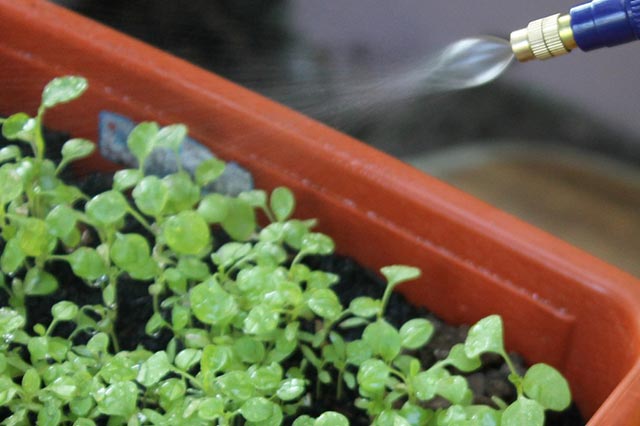
Tip: You can attract soldier beetles by cultivating pollen-producing plants and allowing milkweed and wild lettuce weed species to grow.
Note: Using commercially produced chemical sprays or deterrents may cause severe damage to beneficial insects and the plant itself. It is highly recommended to use organic alternatives when treating consumable crops.
Aphids
Tiny aphids (Aphidoidea) congregate and quickly reproduce to form large groups that wound and suck juices from the host plant to the point of causing it to wilt, dehydrate, die. Without control measures, a small aphid issue can become an out-of-control infestation.

Aphids have long antennae and two tubes projecting from the rear of their abdomen. They are found in green, yellow, red, brown, or gray. They may be winged, depending on the species and life stage.
They usually congregate on fruits and vegetables, flowers, ornamentals, and even shade trees throughout the North American continent. Aphids feeding on plant sap cause foliage to distort and drop. Honeydew excreted on leaves promotes sooty mold growth, and their feeding can spread viral plant diseases.
The honeydew produced by aphids not only causes the growth of sooty mold, but it also attracts other insects, including ants, that compound the pest problem.

Control measures include:
- In infested areas, frequently wash sturdy plants with a strong spray of water
- Attract native predators and parasites such as aphid midges, lacewings, and lady beetles
- Cover plants with floating row covers
- Apply hot-pepper, garlic repellent sprays
- When infestations become severe problems, apply horticultural oil, insecticidal soap, or neem oil
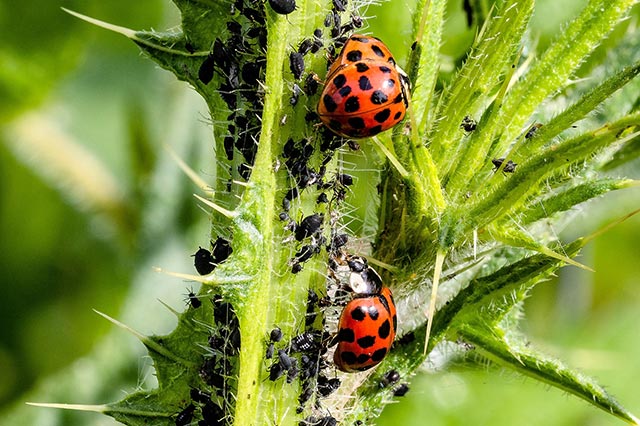
Note: Aphid infestations are typically accompanied by an ant infestation. Ants “herd” the aphids and farm the honeydew to nourish their colony. Once you control the aphid infestation, direct your attention to controlling the ants.
Ants
Individual ants are members of highly organized colonies. They are always in search of nourishment and water to promote the health and growth of their colony.
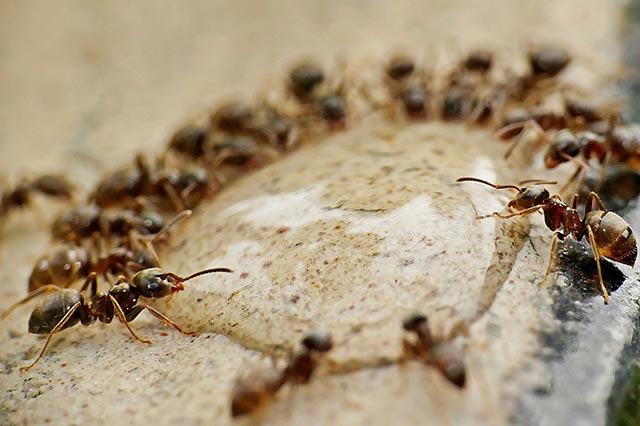
Once a source of nourishment is located, ants will return to their colony via a pheromone trail, which is the path for the rest of the colony to follow. As long as the pheromone trail exists, ants will follow it regardless of your control measures.
Ant colonies can consume incredible amounts of plant foliage, but, as previously mentioned, they can also “herd” aphids to collect the honeydew they produce after consuming the juices from your plants.
Some of the more destructive ant species are:
- Black Garden Ant (Lasius niger)
- Black Carpenter Ant (Camponotus pennsylvanicus)
- Fire Ants (Solenopsis invicta) also known as Red Imported Fire Ant (RIFA)
- Wood Ants, Mound Ants, Thatching Ants, and Field Ants are all part of the genus Formica
- Leafcutter Ants are part of nearly fifty species belonging to the Atta and Acromyrmex genera
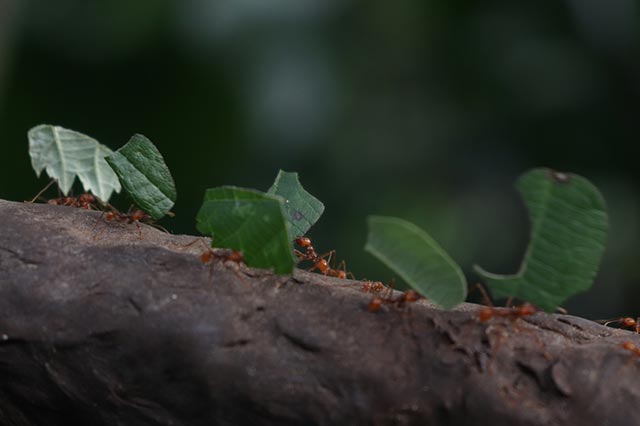
Control measures include:
- Squeeze a lemon or an orange over areas where the ants transit
- Sprinkle pepper, salt, cayenne pepper, or cinnamon around areas you wish to protect
- Peppermint or white vinegar can be spread around to repel them
- Spray ants with a mixture of water and dish soap (the soap penetrates their exoskeleton and kills them)
- Lay a one-inch strip of food-grade diatomaceous earth by trails and nests
- Set borax (or boric acid) and sugar poison traps around your plants
- Set traps with powdered sugar and baking soda (the baking soda dries their bodies and kills them)
- Eliminate aphids from your garden
Tip: Wherever you see an ant trail, make it your goal to interrupt the pheromone trail they are leaving behind. You can accomplish this with diluted white vinegar or juice squeezed from a lemon or an orange.
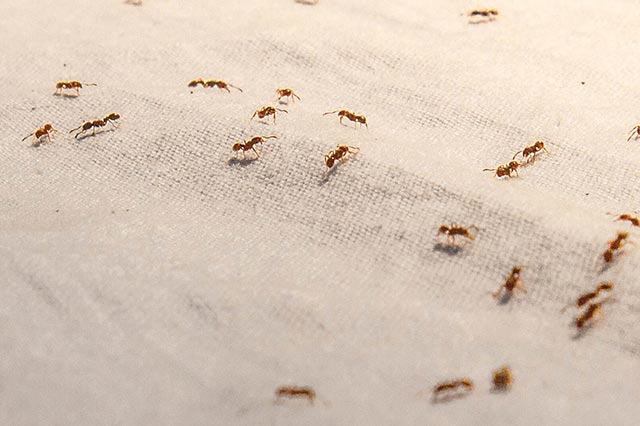
Note: When you apply salt to soil, you are altering the soil’s pH and potentially harming the plants growing there.
Read the following link for additional tips and advice on keeping pests out your garden, and check out this simple recipe for homemade non-toxic pesticides for your garden.
Garden Pest Control
In this article, you discovered information on how to identify and eliminate 5 destructive garden pests without using harsh chemicals.
When you take action to control and eliminate garden pests, you can preserve your garden and crops, harvesting pristine fruits and vegetables.
Allowing garden pests to flourish can lead to massive infestations leaving your garden looking chewed up and dying.
Sources:
extension.umd.edu/hgic/topics/slugs-and-snails-flowers
wildlifetrusts.org/wildlife/how-identify/identify-caterpillars
insectidentification.org/insect-description.asp?identification=Aphids
extension.umn.edu/insects-infest-homes/ants
caterpillaridentification.org/
ipm.ucanr.edu/QT/lfcaterpillarscard.html
The post 5 Garden Pests – Insect Identification & Treatment Tips appeared first on http://gardeninginfo-online.com.
No comments:
Post a Comment